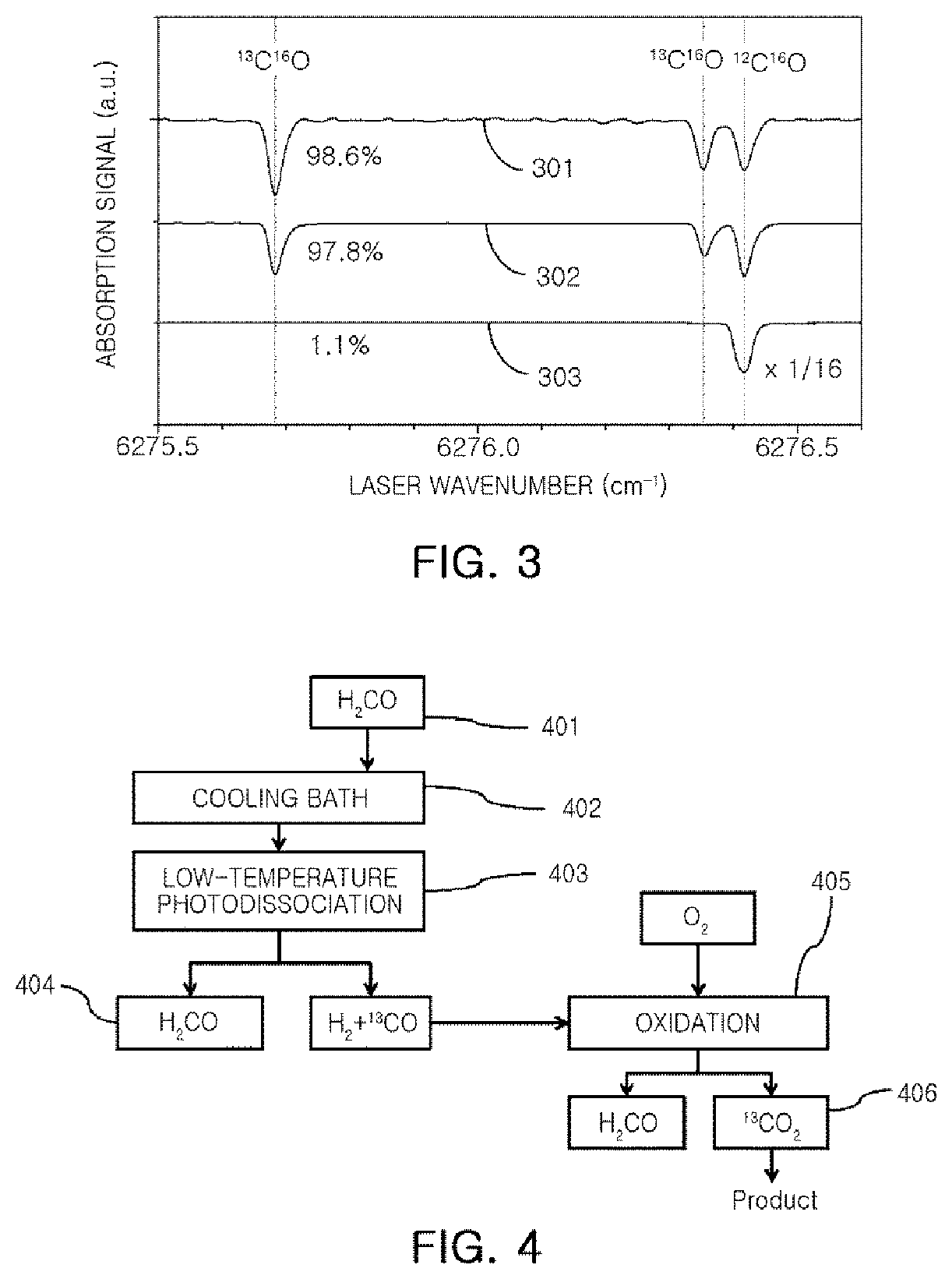Method for separating carbon isotope and method for concentrating carbon isotope using the same
- Summary
- Abstract
- Description
- Claims
- Application Information
AI Technical Summary
Benefits of technology
Problems solved by technology
Method used
Image
Examples
##ventive example 1
Inventive Example 1
[0045]FIG. 4 shows a carbon-13 separation process by low temperature photodissociation. More specifically, the formaldehyde gas supplied from an anhydrous formaldehyde (401) storage was cooled to a predetermined temperature of from 190K to 250K by a cooling bath 402, and injected into a photodissociation apparatus 403, wherein a pressure of the photodissociation apparatus was set to 0.2 to 1 Torr. For the cooling bath 402, a mixture of ethanol and dry ice may be used, or a chiller may be used. The carbon-13 formaldehyde could be photodissociated with a high selectivity in the photodissociation apparatus 403 in which the temperature was kept constant in the range of 200K to 245K, wherein in Inventive Example 1, the photodissociation was performed at a temperature of 243K under a pressure of 0.2 Torr with a wavenumber of 28401.3 cm−1.
[0046]The residual formaldehyde could be captured in an apparatus cooled with liquid nitrogen (liquid-nitrogen trap, 404) and separate...
##ventive example 2
Inventive Example 2
[0049]Formaldehyde was photodissociated by the same procedure as in Example 1, except that the photodissociation of formaldehyde was performed at 203K when a laser frequency was 28401.3 cm−1.
##ventive example 3
Inventive Example 3
[0050]Formaldehyde was photodissociated by the same procedure as in Example 1, except that the photodissociation of formaldehyde was performed at 203K when a laser frequency was 28396.1 cm−1.
PUM
| Property | Measurement | Unit |
|---|---|---|
| temperature | aaaaa | aaaaa |
| pressure | aaaaa | aaaaa |
| wavenumber | aaaaa | aaaaa |
Abstract
Description
Claims
Application Information
 Login to View More
Login to View More - R&D Engineer
- R&D Manager
- IP Professional
- Industry Leading Data Capabilities
- Powerful AI technology
- Patent DNA Extraction
Browse by: Latest US Patents, China's latest patents, Technical Efficacy Thesaurus, Application Domain, Technology Topic, Popular Technical Reports.
© 2024 PatSnap. All rights reserved.Legal|Privacy policy|Modern Slavery Act Transparency Statement|Sitemap|About US| Contact US: help@patsnap.com









